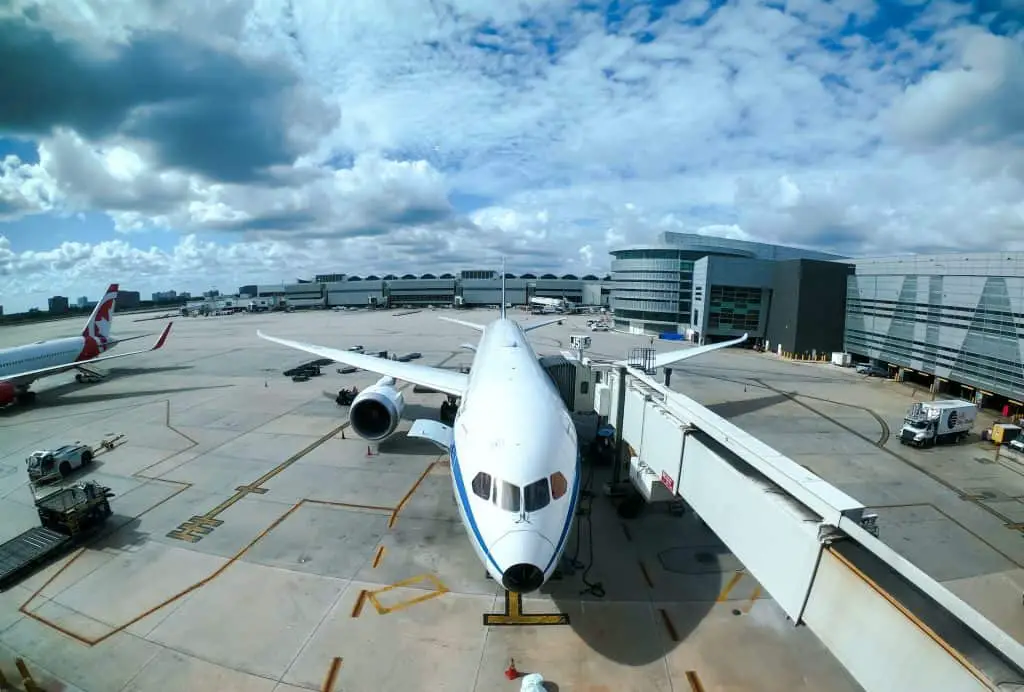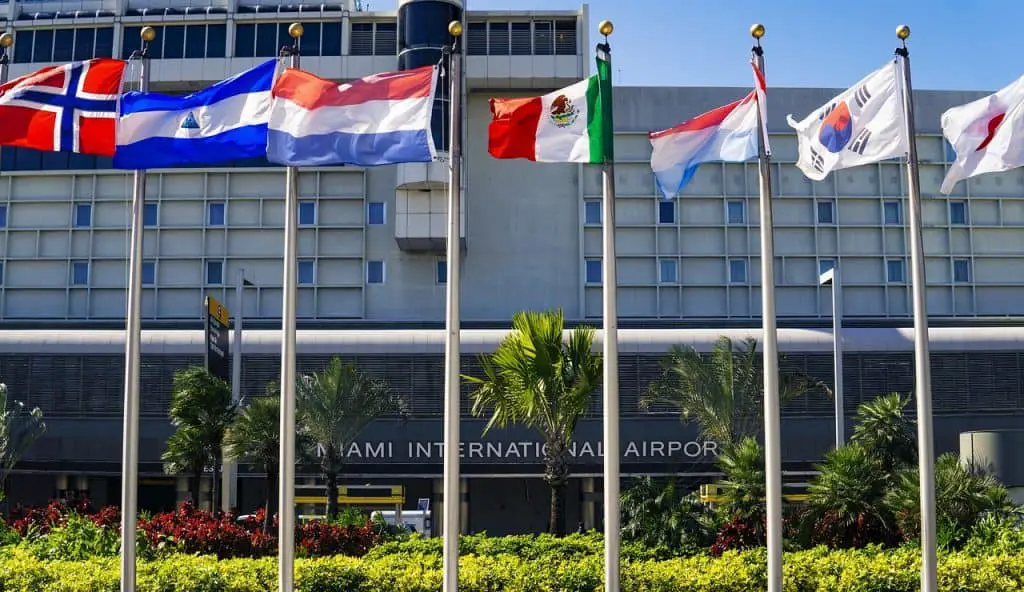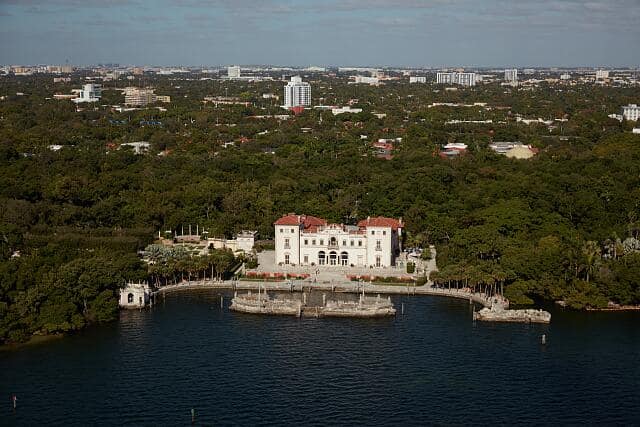Believe it or not, people actually prefer landing at an airport that is luxurious and that makes their experience worthwhile. They actually pay extra to land at an airport like that compared to a boring one with no facilities. Thus, it is no surprise that many tourist attraction cities/countries take a lot of time planning their airports.
Now different airports bring about different experiences, depending on the traffic, the average pocket size of the passengers that land there, nearby attractions etc and that is why sometimes navigating through an airport can be challenging.
If you are flying to, through, or from Miami then here is a comprehensive guide on what you need to know about one of the busiest airports of North America for international flights.
About Miami International Airport
Miami International Airport also known as MIA is located eight miles west of downtown Miami and is the largest gateway for Latin American flights. It is considered a hub for many domestic and international flights and is popular as one of the busiest airports in North America.
To give out a perfect experience of comfort and style, the Miami airport hosts a hotel inside the airport terminal providing direct access to boarding counters, ticket booths, shops, and restaurants. Scrumptious breakfasts, comfortable rooms, and luxurious suites with soothing and contemporary interiors take away your tiredness and give a home-like feeling while being at the airport.
The airport is situated near some excellent attractions including LeonDepot Park, Miracle Mile, South Beach, Little Havana, etc, all of which are some miles away.

Unlike your usual airports, Miami International promotes art and culture through art galleries situated on the premises of the airport. The environment is enriched with contemporary, thought-provoking pieces of art which communicate culture and values of international scope, while also reflecting the South Florida community. Art exhibitions at MIA enhance passenger’s experiences by providing visual aesthetics and engaging art.
Miami International Airport hosts up to 32 eateries under one roof. With a vast variety of options and the recently introduced contactless, safe, and mobile ordering facility, a passenger’s experience is enhanced.
Facts about Miami
It was built in 1928, making it one of the world’s oldest airports.
Miami is the primary airport serving the Miami area of the United States while being the hub of long-haul international flights of South Florida
This airport is one of the only US airports to admit the facility of Airbus A380 Jumbo Jet.
Known as the largest gateway between the United States and Latin America, it is also one of the largest airline hubs in the US.
It serves cargo facilities and passenger flights throughout America, Europe, and Asia. The airport stood 1st in the US for catering the most international flights and 2nd by volume of international passengers in 2011.
More than 44 million passengers traveled through this airport in the same year which makes it the 23rd busiest airport in the world based on passenger traffic. It caters to almost 1000 flights a day (as per pre-corona reports).
MIA is also known to have handled more international cargo than any other airport in the US.
Terminals of MIA
Miami International has one terminal divided into three parts: North, South, and Central terminal and each terminal has several concourses.
The North Terminal
Concourse D of North Terminal (Blue) is home to Latin American and Caribbean flights and is the only concourse of this terminal with one bus station and 45 gates in total.
The Central Terminal:
The Central Terminal (Yellow) has three concourses labeled E, F, G with 52 gates in total.
Concourse E features two bus stations and 12 international gates with an international in-transit lounge for arriving international passengers through connecting flights. Concourse F has 19 gates and a bus station and is widely used to claim domestic baggage.
Concourse G has 15 gates and a bus station and is used for departing international flights. It is the only concourse at MIA that does not cater to international arrivals.
The South Terminal:
The South Terminal (Red) constitutes two concourses H and J with 28 gates in total.
Concourse H has one bus station and 13 gates and serves Delta Airlines while concourse J serves United Airlines and its partners with 15 gates in total and a bus station. Each terminal constitutes several comfortable lounges and sitting spaces where passengers can enjoy some quiet and destress before flying.
Facilities at Miami International Airport
MIA is one of the busiest airports and is capable of handling a huge number of international as well as domestic flights. Therefore, to cater to the needs of passengers, MIA is laced with various facilities and smooth operations to avoid any stress while traveling.
Currency Exchange
You can find Foreign currency exchange counters at four different locations. One is on the 2nd level throughout the terminal, two in each concourse E and J, and one is found inside Concourse D.
Language Assistance
It is a common problem for foreign travelers to be able to communicate in the local language especially at airports to navigate their way through all the protocols. MIA provides language assistance/translation service booths for passengers located at Terminals D, E, H, J.
A translation language line is used by staff to access a translator for patrons whose language is not that of the multilingual staff at MIA. In addition, their multilingual staff provides interpretation and translation service at all public areas of the terminal and in the Federal Inspection facilities.
Lost & Found
To facilitate passengers, a lost and found service is located on the 4th level of North Terminal D which is open daily from 8 am to 6 pm. This service helps travelers to navigate or claim their lost belongings. The staff at Lost and Found makes the process smooth and easy.
MIA Air (For people with special needs)
Travelling and flying are never the same for every individual. It brings different experiences to different people. For some, it is just a plain process of hopping on and off airplanes and within hours they can see a different side of the world. While for mentally challenged people and people with cognitive or developmental disabilities, it can be the most difficult experience. To cater to the needs of such individuals, MIA Air is a dress rehearsal program that allows passengers with disabilities the opportunity to practice travel experience in a safe and sound, and controlled environment. The program also helps prepare travelers for future flights.
ATMs & WiFi
The facility of ATM is easily available at MIA, both landside and airside. Travelers can conveniently avail the facility of data port connections and WiFi at different locations throughout the terminals.
Pet relief Areas
Interestingly, travelers can enjoy pet relief areas located in concourses D, F, G, and J. These are enclosed units having synthetic grass, disposable bags, a fire hydrant, and sinks.
Play Areas
Traveling with little ones can be challenging but at MIA, you can relax while your kids play at the interactive children’s areas located in Concourse E near Gate Ef and Concourse D as well.
Baby Care
If you are traveling with a toddler who needs care and nursing, then no need to worry as MIA facilitates all mothers by providing baby care facilities. You need to look for free-standing MIA mamas’ suites. These suites provide a fold-down table, two benches, a collapsible table, a power outlet with USB and lockable doors for privacy. These are located at various gates throughout the terminals on the airside.
Smoking Areas
To avoid the hazardous effects of smoking in public, MIA provides separate isolated areas where smokers can smoke without causing any inconvenience to others. The smoking areas can be found outside the terminal on Level 1 of arrivals and Level 2 of departures.
Car Rentals
Rental Car Center (RCC) is located just one mile east of MIA. To access RCC, you can use MIA Mover located on the 3rd level.
Dining
Travelers can destress and enjoy a vast variety of delicious foods at different terminals of the airport. Ranging from breakfast and snacks to top-notch lunch and dinner.
Sleeping in Miami International Airport
Long haul flights, stretched hours of traveling, or waiting for flight arrivals call for a short nap. Whether you need a nap or an overnight slumber, good sleep options at Miami are fairly limited. Although the seating is plentiful and most seats, if not all, are equipped with armrests, MIA tends to be cold and noisy which can compromise the sleep quality or maybe not let you have any. However, there are some key spots. According to travelers, Terminal D is recommended the most particularly for carpeted corners that give you extra layers so you can enjoy cushion as well as some warmth. A few travelers also set up on red couches near the baggage claim in the South terminal.
No matter where you sleep, it is always helpful to bring something to sleep on and block noise and light. Travelers report freezing temperatures throughout the airport so better arrive prepared with a sleeping bag or a blanket.
Here are some good sleeping spots that travelers have spotted:
1. There are some slim red couches at the International Arrivals Area near baggage carousels 1-6 which are comfortable for a good sleep.
2. The North Terminal has a quiet, carpeted area outside the Auditorium.
3. Terminal H has a Yoga Room where travelers report to have a good sleep.
4. In Terminal D, there is a carpeted area near Admirals Club.
5. Terminal J, Level 4 has some red, thin starfish-shaped couches.
If you prefer privacy and a completely secluded comfortable sleep then you can book a room at Miami International Airport Hotel located inside the airport. The hotel offers overnight rooms as well as day rooms. Miami Airport has several lounges too which you can pay to access no matter which class of service you are flying and at least one of them has a quiet area with recliners where you can take a short nap or rest for a while.
International Arrivals at Miami Airport
International Airlines tend to use Central Terminal (Yellow). Central Terminal hosts concourses E,F, and G. International Airlines like British Airways, Iberia, Qatar, Aeroflot. Airplay, Eurowings are known to use Central Terminal at Miami Airport. Central Terminal has 52 gates in total.
Concourse E features two bus stations and 12 international gates with an international in-transit lounge for arriving international passengers through connecting flights. Concourse G has 15 gates and a bus station and is used only for departing international flights. It is the only concourse at MIA that does not cater to international arrivals.
Miami International Airport dates back a long time,almost 92 years, when Pan American Airways moved their activity from Key West to Miami. Pan American had initially settled their base camp in Key West essentially in light of the fact that It was the nearest point in the United States to Cuba.
At that point, single-motor airplanes had a disturbing propensity to be problematic and frequently required emergency landing regions since their trustworthy territory was not considerably more than 100 miles. When Pan American Airways at last became functional in the fall of 1927, the Fokker F-7 trimotor had opened up.
The F-7 offered a more prominent reach and significantly better dependability with three motors. These airplanes were fueled by three Wright Whirlwind motors that created 240 drive each and conveyed eight travelers at a speed of 118 mph with a scope of 600 rule miles.
Accordingly, the essential area of Key West became less significant and couldn’t coordinate the benefits that Miami offered, giving the administrations and assets that were needed for the eager plans of Pan American Airways.
Pan American bought a 116-acre of clean land from the Seminole Fruit and Land Company that was arranged along the south side of N.W. 36th Street, neighboring Miami Springs, and built Pan American Field. This little air terminal in the long run turned into the establishment for one of the biggest and most active air terminals on the planet, referred to now as Miami International Airport.







